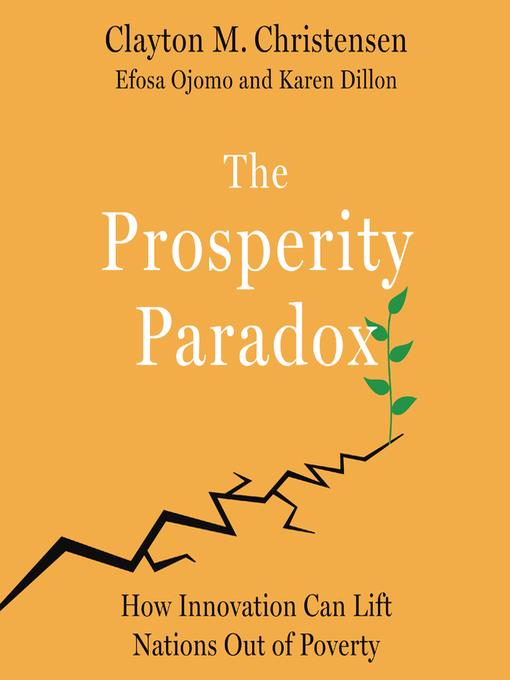
The Prosperity Paradox
How Innovation Can Lift Nations Out of Poverty
کتاب های مرتبط
- اطلاعات
- نقد و بررسی
- دیدگاه کاربران
نقد و بررسی

November 15, 2018
Why have some nations become prosperous while others have remained poor--and in many cases poorer than half a century ago? Harvard Business School professor Christensen (The Power of Everyday Missionaries: The What and How of Sharing the Gospel, 2013, etc.) and colleagues venture some suggestive answers.Prosperity, by the authors' account, does not mean simply relative wealth, but also access to goods such as education and health care as well as the promise of good governance and upward mobility. By these lights, readers may well wonder whether the United States counts as a prosperous nation; be that as it may, an ingredient for prosperity is the ability to see a problem and solve it by opening a market that pulls infrastructure and other social goods up with it. A case in point is Mo Ibrahim, who, 20-odd years ago, saw that in Africa, with its lack of landline infrastructure, lay the opportunity to build a vast cellphone network to serve the continent's billion people. This, writes the authors, speaks to "nonconsumption," or unattainability--"there's no affordable and accessible solution to their problem," in short--that Ibrahim saw his way through to addressing by innovating in areas such as pay-as-you-go programs rather than fixed monthly fees. No bank would touch his Celtel, which he funded with equity financing, but Ibrahim built an empire overnight that spurred other "market-creating innovation." All this is of a piece with Christensen's doctrine of disruptive innovation: Creating markets is preferable to sustaining them (the original iPhone did the former, he writes, while the iPhone X does the latter) and to making innovations in efficiency. Christensen and colleagues serve up examples from business histories (among the most winning of them the Bank of America) around the world, including Mexico, long touted as "the next potential superpower--but it's always stuck there." Their extensive notes may seem a touch daunting, but they lend a case-study aspect to a book that will be valuable to business readers.Of considerable interest to investors in emerging economies as well as development specialists and policymakers.
COPYRIGHT(2018) Kirkus Reviews, ALL RIGHTS RESERVED.

December 1, 2018
To explain why so many infrastructure projects ultimately fail, Harvard Business School professor Christensen (Competing against Luck, 2016) focuses on the long-term benefits of market-creating innovations that bring resources to developing countries and help them along the path to prosperity. Christensen and coauthors Efosa Ojomo and Karen Dillion highlight several effective examples, including building cell phone infrastructure in Africa and providing affordable insurance in India. They also create a model based on innovative successes in the U.S., Japan, South Korea, and Mexico. Drawing on his decades of experience, Christensen reframes the concept of bringing outside money to developing countries, instead recommending projects that are tailored to suit the needs of a culture. Accessible and clear, this examination shows how essential innovation is to development and offers a targeted approach that may be key to solving the titular paradox and leading countries to a prosperous future.(Reprinted with permission of Booklist, copyright 2018, American Library Association.)

























دیدگاه کاربران